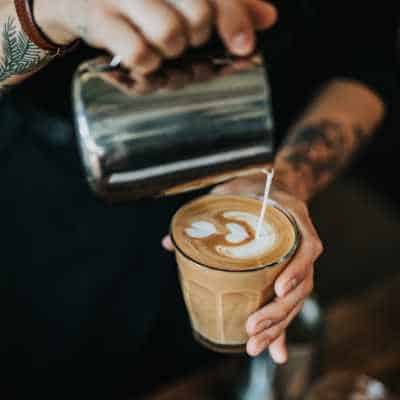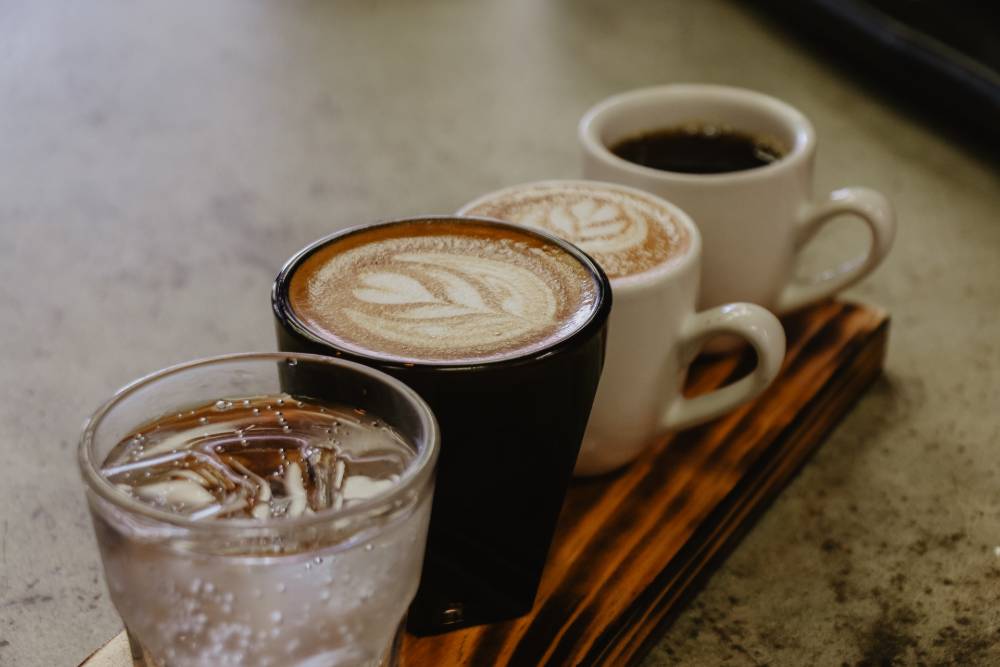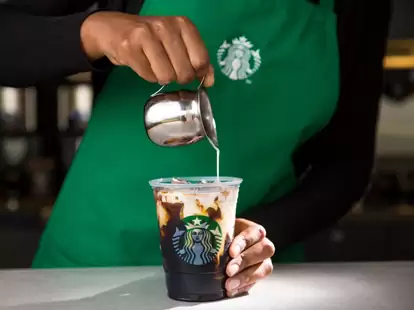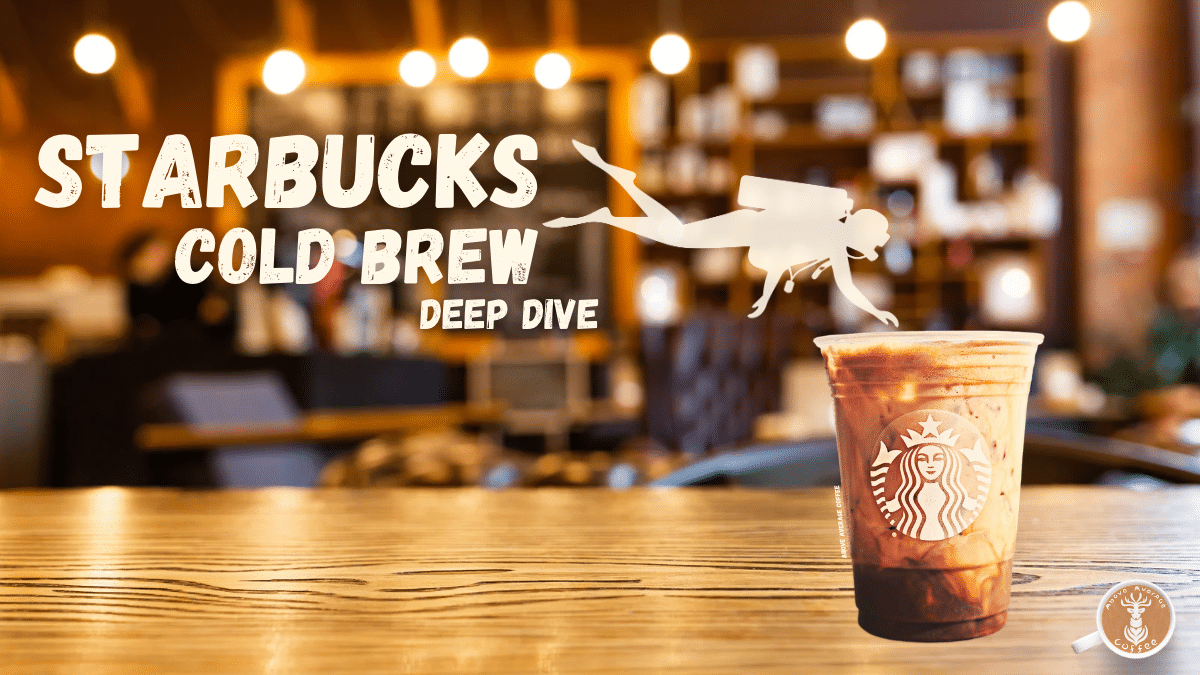Reading the menu in your local coffee shop can prove to be more confusing than helpful. There are so many different kinds of brewed coffee that the list of options can leave your head spinning. The barista is often rushed off their feet, far too busy in the morning chaos, that it can seem out of the question to ask them for any advice on the type of coffee you should choose.
It can really save you a lot of time and embarrassment to brush up on your coffee knowledge before you set out to order a new kind of coffee. To help you out, I hope to cover all the most important questions you may have on this wonderful drink, here in my blog.
Today we will focus on a really common question many people ask about the decadent cappuccino. Does a cappuccino have caffeine and how does this compare to other coffee drinks?
The quick answer is yes, a cappuccino does have caffeine in it. That’s about 63 mg caffeine for a single shot cappuccino or 126 mg of caffeine for a double shot version.
That’s the summary, but what does this really mean? What is a cappuccino, how is it made, and how does it compare to my other favorite coffee drinks? Here are all the answers and more, so you too can be an expert on the cappuccino coffee drink.

What is a Cappuccino?
A cappuccino is a coffee drink of Italian origin. It combines a shot of espresso with a 50/50 layer of steamed milk and milk foam. The creamy steamed milk sweetens and balances the coffee and the foamed milk gives it a thick, bubbly finish.
To make a true cappuccino you really need an espresso machine as these kinds of coffee makers are able to generate high pressure. This results in the thick, syrupy coffee known as espresso as the pressurized extraction gives a rich aroma and the characteristic crema on top.
The concentrated espresso coffee makes a perfect base for the cappuccino drink as its dark, bold flavor stands out against the creamy milk. The drink is usually formed of equal parts espresso to liquid milk and then milk foam on top. This means that drink size can vary if a single shot or double shot of espresso is used.
A cappuccino is considered a breakfast drink in Italy and you may get strange looks if you order one in the afternoon. It can be served plain or some baristas will finish it off with a sprinkle of cocoa powder or cinnamon on top.
Is There Caffeine in a Cappuccino?
Yes, there is caffeine in a cappuccino. The amount of caffeine is dependent on the amount of coffee used to make the drink. A single shot of espresso contains around 63 mg of caffeine and this is typically used to brew a 5-6 Oz cup of cappuccino. For a 10-12 Oz serving, a double shot of espresso is used and this contains 126 mg of caffeine.
The precise amount of caffeine in each shot of espresso can vary a lot depending on the coffee beans used. Some espresso blends rely heavily on Arabica beans which are bursting with complex flavor notes but are lower in caffeine. Some blends will use a lot more robusta beans which are more earthy and dark in flavor and contain higher levels of caffeine.
Starbucks offers a range of sizes when it comes to their cappuccinos and the caffeine levels vary according to this. A ‘short’ 8 Oz option and the ‘tall’ 12 Oz option both have 75 mg caffeine as a single espresso shot is used to make these. A ‘Grande’ 16 Oz and ‘Venti’ 20 Oz cappuccino both have a double shot of espresso added so they contain 150 mg of caffeine.

Cappuccino Nutritional Value
A Starbucks tall cappuccino is 12 fl oz and contains a single shot of espresso. It has 75mg caffeine and 100 calories per serving. There are 9g of sugar, 7g of protein, and 4g of fat all from the milk used.
The nutrition will vary a lot with the drink size selected as well as with different kinds of milk used. Plant-based milk will have less saturated fat but may be higher in carbohydrate content.
Overall, a cappuccino is a reasonably balanced choice when it comes to nutrition. It’s low-calorie and doesn’t contain any sugary syrups or artificial sweeteners. It’s basically just a glass of milk with a small boost of caffeine added.
Wet vs Dry Cappuccino
An experienced coffee drinker will know that a cappuccino can be found in a variety of forms. If you ever find yourself in a very high end coffee shop the barista may ask you if you prefer your cappuccino ‘wet’ or ‘dry’. The difference between these two types of coffee simply comes down to the ratio of steamed milk to milk foam used. A cappuccino with more liquid steamed milk is ‘wet’ whereas one with less steamed milk and a thicker layer of foam is termed ‘dry’. It really depends on whether you prefer a thicker, creamier texture or a lighter texture with a more intense coffee flavor shining through.
The amount of coffee used to make both these variations of the same drink is the same. As with a regular cappuccino, the number of espresso shots depends on the final size of the drink, not the ratio of milk so it doesn’t matter if you like it wet, dry, or somewhere in the middle. It will still end up with the same amount of caffeine.
How Does a Cup of Cappuccino Compare to Other Coffee Drinks?
Cappuccino vs Latte

A latte is very similar to a cappuccino in that it’s made up of steamed milk and espresso. The only difference is the ratio of milk used. A latte is pretty much only liquid steamed milk with only an inch or so of milk foam on top. As with a cappuccino, the number of shots of espresso used depends on the size of coffee you plan to brew so by volume, a latte will have the same amount of caffeine as a cappuccino.
Cappuccino vs Macchiato
A macchiato is another espresso-based drink that incorporates steamed milk into the mix. It uses less milk than a latte or cappuccino and only incorporates the foamed milk portion. As with the previous two options, the caffeine content depends on the espresso so a single shot macchiato will contain the same amount of caffeine as a single shot cappuccino.

Cappuccino vs Mocha
A mocha coffee drink can be brewed in a variety of ways but to keep things simple we will just consider the most common option. A mocha is essentially a latte brewed with chocolate sauce mixed in and occasionally whipped cream on top. As with all espresso-based drinks, the caffeine depends on the number of shots used so it contains as much caffeine as the size of the drink.
Cappuccino vs Drip Coffee
Drip coffee, filter coffee, or regular coffee all refer to coffee brewed using a drip machine. The coffee grounds sit in a paper filter in a funnel-shaped holder and hot water is poured over them. The coffee brews in the funnel and slowly trickles down into a carafe below. This kind of coffee is extremely popular amongst coffee lovers and is typically what you are served if you ask for a simple black coffee.
An 8 Oz cup of drip coffee contains around 150-200 mg of caffeine. Although this is less caffeine than espresso per volume, a single serving contains more caffeine compared to a double-shot cappuccino. It’s a good choice if you’re in need of a pick-me-up.
Cappuccino vs French Press Coffee

French press coffee is an immersion brewing process where coarsely ground coffee is left to sit in hot water for 4 minutes before a plunger is pressed through the liquid to separate the grounds to the bottom of the carafe. An 8 Oz serving of French press coffee contains 185 – 220 mg caffeine depending on the type of beans used. That makes this one a good choice to get you out of bed in the morning but don’t try it in the evening.
Cappuccino vs Instant Coffee/Instant Cappuccino
Instant coffee is made from freshly brewed coffee that has been freeze-dried to leave a powder form. This can be easily rehydrated by dissolving in hot water and makes a very quick, easy cup of coffee. A typical 8 Oz serving of instant coffee contains about the same amount of caffeine as a single shot of espresso so around 63-75 mg of caffeine.
Instant cappuccino mix sachets also include milk powder (similar to creamer) but typically contain the same caffeine as instant coffee.
What About Decaf Coffee?
It’s recommended to not consume more than 400 mg of caffeine per day and this includes all caffeinated beverages, not just coffee. This equates to roughly two 8 Oz cups of drip or french press coffee or around five shots of espresso. If you still crave more coffee flavor after you’ve consumed this amount then consider ordering a decaf cappuccino as you’ll get all the delicious flavor without overdoing it on the caffeine.
Final Thoughts
So that’s it for cappuccinos and caffeine. This drink is super satisfying and not a poor choice nutrition-wise as long as you incorporate it into a healthy diet and lifestyle. It can contain 63-150mg of caffeine, depending on the serving size so make sure you don’t consume more than the recommended 400 mg and you’re fine to enjoy it without any concerns!





